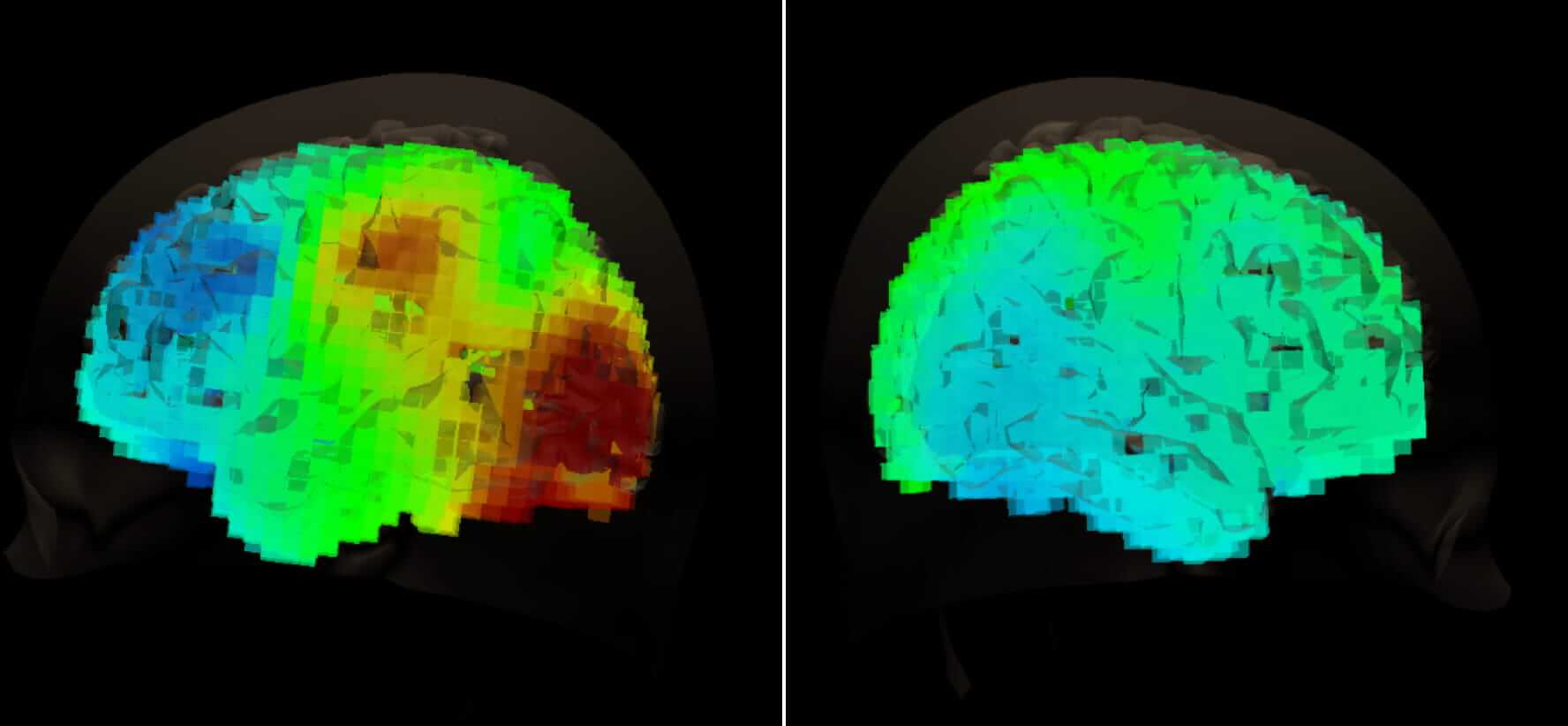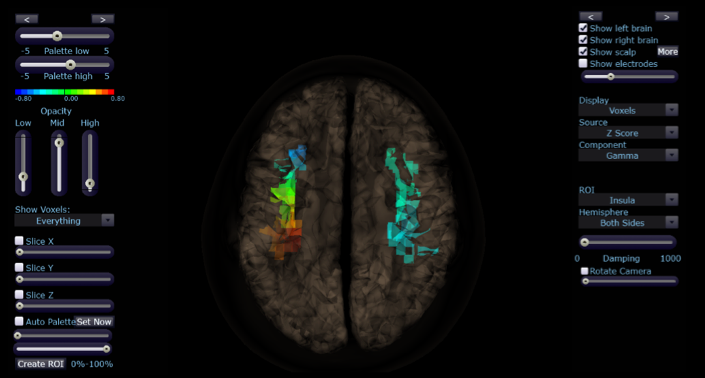VR for Empathy
This case study used quantitative EEG to examine changes to the anterior cingulate when watching a Healium virtual reality film.

A 2016 case study on how VR affects the brain suggests immersive story could be an effective tool to shift individuals into pro-social emotional states. Healium’s content is a first step toward compounding media experiences much like you would compound drugs to trigger different outcomes. While none of our stories pretend to mimic the effects of psychotropic medications, in three peer-reviewed journals Healium’s media content has been clinically validated as a self-management tool for anxiety. Over the last five years, researchers have studied our VR and AR content to try to discover what kinds of colors, sounds, and visuals best motivate, influence mindfulness, and even foster empathy.
It’s kind of like tuning a piano. The storyteller presses a key and the psychologist studies whether the immersive storytelling input needs to be louder, brighter or a different character altogether.

Previous research has shown VR can be just as effective as a dose of hydromorphone. Healium’s platform seeks to fine tune that ‘dosage’ into outcome based stories you can feel.
Because VR is already used in therapy, storytellers need to understand how each input, character, movement, gesture, pacing, and camera angle affect the brain. Practitioners also need to know how media content impacts specific brain regions.
Dr. Jeff Tarrant, Chief Scientist for Healium and founder of the Neuromeditation Institute, looked at empathy centers of the brain to see if VR could develop empathy and compassion. The findings, which you can read below, support how virtual worlds can help people empathize and one day heal.
Can Virtual Reality be used to develop empathy and compassion?
This case study was conducted by Dr. Jeff Tarrant, a board-certified Neurofeedback Specialist, founder of the Neuromeditation Institute, and Chief Scientist for Healium.
The subject was a 68 year old female. EEG data was recorded in 19 channels before and after the subject watched a 5 minute story about a group of individuals in Zambia that did not have the use of their legs. In the story, these individuals are presented with hand crank PET (Personal Energy Transportation) carts, allowing them mobility they have not experienced in many years. The story was created by StoryUP VR and is designed to increase empathy and compassion in the viewer.
After completing the EEG recordings, the subject was asked to write a few statements about what she was feeling or thinking after the experience. The subject wrote the following list:
-sadness
-hope
-despair
-gratitude
-sympathy
-wanting to help
-sense of community
When comparing the EEG data after the experience to the baseline data, the largest changes were observed in gamma brainwaves (35–45hz). Gamma represents the fastest brainwaves and is associated with increased cognitive processing as well as a synthesizing of information.
The images below show the changes that occurred after the VR story. Bright colors (yellow, orange, red) indicate a significant increase of gamma activity after the VR experience. This first two images show that the increased gamma activity occurred almost exclusively in the left hemisphere.

These increases were seen predominately in the parieto-occipital area toward the back of the head and also along the sensory motor strip. It is possible that this reflects a combination of visual and body oriented processing. Because it is on the left hemisphere, this subject was likely engaging in some kind of language oriented processing, perhaps attempting to integrate and make sense out of what was just experienced.
In an attempt to understand these findings in more detail, the analysis was extended using sLORETA analyses to examine changes in deeper structures of the brain.
The image below shows changes in the Lingual Gyrus and supports the notion that there was some level of language processing involved. It is likely that the subject was engaged in some level of internal “talk,” while processing the story.

The next image shows increased activation in the posterior portion of the left Insula. The Insula is important in emotional processing, empathy and the experience of internal bodily states (e.g., heart beat). This activation is consistent with the subject reporting the experience of a number of emotional states including empathy, sadness and hope.

The final image shows activation of the left Parahippocampal Gyrus. This region of the brain is generally associated with memory encoding or retrieval. This activation is likely to be the result of the subject attempting to integrate her experience with what she knows and understands from previous experiences and knowledge.
The results of this case study show that a brief VR experience can induce both subjective feelings of empathy and compassion, but also activate regions of the brain important in the processing of these complex emotional states. While more research is needed, these preliminary results provide additional evidence that VR can be used to assist in the development of prosocial emotional states.

The Science Behind Healium
Virtual Reality for Anxiety Reduction
Frontiers in Psychology published a study showing a reduction in anxiety after a 4 minute Healium experience. The study used quantitative EEG to measure the brain’s reaction. Read the full manuscript below.
VR for Positivity
The Journal of Neuroregulation published a study on Healium’s effect on a specific brain pattern associated with feelings of positivity.
VR Changes Mood Before Blood Donations
A study published in the Scholarly Journal of Psychology and Behavioral Sciences looked at Healium’s ability to quickly improve mood and reduce tension before blood donations.
VR for Empathy
This case study used quantitative EEG to examine changes to the anterior cingulate when watching a Healium virtual reality film.




